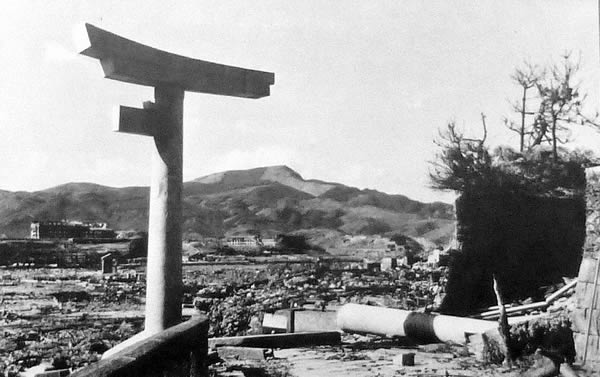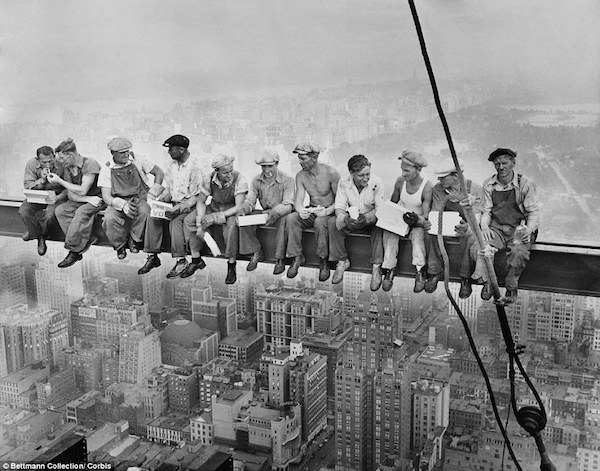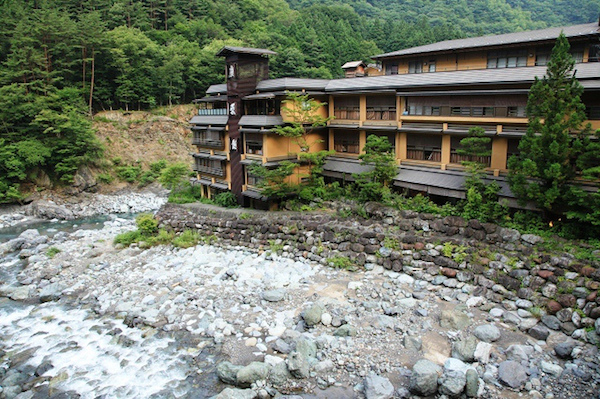
The Brandenburg Gate (Brandenburger Tor) in Berlin is one of the first landmarks that comes to mind when thinking of Germany. It became infamous during the Cold War, as a sad symbol for the division of both Berlin and Germany – the Gate stood between the east and west and became part of the impenetrable Berlin Wall.
It is located on Pariser Platz, a wide-open space that was arguably the grandest square of pre-war Germany. The Brandenburg Gate was the only landmark to survive the Allied bombardment of the German capital in 1945, although it was badly damaged with holes in the columns from bullets and nearby explosions. One horse’s head from the original quadriga survived and is kept in the collection of the Märkisches Museum.
After the peaceful reunification of Germany, the Brandenburg Gate was refurbished in 2000. Today, it is one of the most visited landmarks in Germany and Europe. (Source 1| Source 2)

The Sannō Shrine, located about 800 meters southeast of the atomic bomb hypocenter in Nagasaki, is noted for its one-legged stone torii at the shrine entrance.
The well known one-legged torii (or arch) was one of the unanticipated results of the atomic bomb blast on August 9, 1945. One support column was knocked down, but the other somehow remained standing, even though it was rotated about 30 degrees on its pedestal base.
The surviving trees of Sannō Shrine are another living demonstration of destruction and regrowth. Two large camphor trees were scorched, burned and stripped of all leaves by the bomb’s shock wave, and yet, despite everything, the trees survived. One tree in Nagasaki was designated a natural monument on February 15, 1969. The dead parts of the living trees have been enveloped by new growth.
The entire neighborhood was reduced to rubble by the explosion of the atomic bomb, but this gate, although located very close to the hypocenter, miraculously managed to resist the fierce blast and remain standing on one leg as though speaking silently about the horror of that day in 1945. (Source 1 | Source 2)

When the Tohoku earthquake and tsunami struck Japan on March 11, 2011, an entire forest in the Iwate Prefecture was obliterated. Of the 70,000 trees, just one remained – the so-called “Miracle Pine.”
The lone pine tree lived for 18 months after the disaster before dying, due to saline soil conditions caused by the tsunami. Over the course of its 173 year life span, it had survived three major tsunamis (1896, 1933, 2011). When the tree died (as a result of theenvironmental changes in the area) it was cut down and sectioned for preservation.
The tree has since been rebuilt as a monument. The trunk was hollowed out and reinforced with a carbon spine. The branches and leaves at the top of the tree were replicated in plastic. Two years after the disaster, the Miracle Pine now stands as a lasting monument. (Source 1 | Source 2)

Hiroshima’s A-Bomb Dome is a symbol of peace which most people have seen at least once in a photo. The building, which was designed by a Czech architect in 1915, had originally been used as the Hiroshima Prefectural Industrial Promotion Hall.
Since the Hiroshima Prefectural Industrial Promotion Hall was located only around 160 meters from the bomb hypocenter, the building was indeed hit, and everyone inside the it died. However, it was not destroyed completely – the blast of the atomic bomb, which was vaporized in the air, prevented it from total collapse. The building was the only structure left standing near the bomb’s hypocenter.
It was soon dubbed the Genbaku (“A-Bomb”) Dome, due to the exposed metal dome framework at its apex. The structure was scheduled to be demolished with the rest of the ruins, but with the majority of the building still intact, the demolition plans were delayed.
The Dome became a subject of controversy – some locals wanted it torn down, while others were eager to preserve it as a memorial of the bombing and a symbol of peace. Ultimately, when the reconstruction of Hiroshima began, the skeletal remains of the building were preserved and it was designated a UNESCO World Heritage Site in 1996. (Source 1 | Source 2)

Japan has been struck by magnitude 7.0 or greater earthquakes a staggering 46 times since the pagoda at the Horyu-Ji Temple was built in 607 A.D. The five-story pagoda, located in Sai-in, stands at 32.45 meters in height (122 feet) and is approximately 20X20 in width. It is one of the oldest wooden buildings in the world. The wood used in the center pillar of the pagoda is estimated through a dendrochronological analysis to have been felled in 594. So, how did the 122 foot tall structure stay upright through all that shaking?
Multi-story pagoda technology arrived in Japan during the sixth century, alongside Buddhism from China. On the mainland, pagodas were traditionally built of stone. However, given Japan’s seismic instability and higher annual rainfall, that design was simply untenable. After years of experimentation, Japanese builders figured out how to adapt pagodas to shaky conditions using these three design changes: the use of wide and heavy eaves, disconnected floors, and a shock-absorbing shinbashira.
The central pillar of the pagoda rests three meters below the surface of the massivefoundation stone, stretching into the ground. At its base is enshrined what is believed to be a fragment of one of Buddha’s bones. Although the pagoda is five-stories, it does not allow one to climb up inside, but it is instead designed to inspire people with its external view. (Source 1 | Source 2)

Completed in 1372, the Leaning Tower of Pisa is one of the most recognizable structures in the world. Only Pisa’s Cathedral and Baptistry are older than the tower, located in the famous Italian town’s Cathedral Square.
During World War II, the town was under German control. The Tower was used as an observation post – a perfect location given the flat, coastal terrain surrounding Pisa.
The Allies struggled to get to the Tuscan town in the summer of 1944, partly because of the marshy grounds surrounding Pisa, but mainly because the Germans were being quite stubborn in their attacks. The Germans were so accurate in their missile strikes that Allies assumed that the enemy must have lookouts in the tower.
When the Americans neared the outskirts of Pisa, the last two-and-a-half mile stretch was nothing less than a killing zone. The top brass wanted to know how the Germans were using the infamous building and decided to send someone to scout it. Staff Sgt. Leon Weckstein of the 91st Infantry Division had remarkable powers of observation and would spend 16 hours a day manning forward observation posts and directed artillery and mortar fire. The tower’s fate laid in the eyes of this 23-year-old California native who, in 1942, was rejected by the Navy for being short-sighted. The infantryaccepted him but, then again, “they take anyone,” he remarked.
Weckstein and his radioman, Tech. Sgt. Charles King, were informed of their new mission. It would be dangerous as they entered a no-mans-land between American and German forces. If enemies were indeed using the tower, Weckstein had to radio in – “This is Able George Two… Fire!”– and Allied forces would have leveled the tower in seconds.
Weckstein was methodical in his observations. For those few minutes, he had the power to decide the fate of the Leaning Tower of Pisa, but as he sat there and took in the tower’s beauty, he was overcome and held off calling it in until he was certain.
Weckstein was still transfixed when shells burst overhead. The Germans had launched an airborne attack in Weckstein and King’s directions. They radioed back and were told to retreat back to camp. The top brass had already decided on different attack plan and the tower was spared. Whether the Germans were actually in the tower on that hot and muggy July day is still unknown. Looking back Weckstein stated: “You know something? I’ve had 50 years to think about it, and I’m pretty sure they were.” (Source)

As Typhoon Haiyan tore through the Philippines, it caused destruction on an unprecedented scale, tearing up homes and causing families to flee its violent path. However, one survivor continued to stand tall with arms outstretched – a giant statue of Jesus Christ escaped unscathed from the natural disaster.
Though Haiyan erased entire towns from the map, Jesus remained upright, casting a protective gaze over the coastal town of Tanauan, in the central Philippines.
The preservation of the statue has served as a symbol of hope to those still struggling to survive the typhoon’s wounds, which left around 5,000 dead. (Source)

On December 26, 2004, a devastating earthquake measuring 9.1 on the Richter scale shook the Indian Ocean off the coast of North Sumatra, Indonesia. The earthquake caused a tsunami, which swept over a number of beaches around Indian Ocean. More than 230,000 people died and millions were left homeless.
One of the cities affected was Lhoknga City, on the west coast of Sumatra near the capital city of Aceh, Banda Aceh. The city was flattened, but a miracle occurred. A mosque survived and stood firm in the midst of the destruction. Many locals believe divine intervention saved the Rahmatullah mosque. (Source)

In November 2014, an ornate wooden crucifix made in Italy and a statue of the Virgin Mary miraculously survived a four-alarm fire that destroyed much of the historic Holy Cross Catholic Church in San Jose, California, battled by over 100 firefighters.
As firefighters kept onlookers and pedestrians a safe distance away from the building they believed may cave in, they were able to hoist the crucifix out of the smoldering 108-year-old church as members of the parish watched in amazement.
Some paritioners said they didn’t believe the 10-foot-tall wooden crucifix would survive the blaze. Others see its survival — intact and unaffected by the inferno — as a sign that the church should be rebuilt. (Source)

Constructed in 1869 using big limestone blocks, the Chicago Water Tower (and all its small neo-gothic towers) resembles a tiny European medieval castle more than a water tower. It was designed by architect William W. Boyington and houses a forty-meter-tall standpipe which was used to equalize the pressure of the water pumped from the adjacent pumping station.
The Water Tower and nearby pumping station were the only two public buildings in downtown Chicago that survived the Great Chicago Fire of 1871, which burned the entire city to the ground.
Since then, the tower has became one of the city’s most beloved icons as it symbolized Chicago’s resilience. It was threatened with demolition several times – in 1906, 1918 and 1948, but it was saved each time thanks to a public outcry. The tower was eventually restored in 1962. (Source | Photo)
Source: Oddee.com
This post has already been read 3908 times!
















